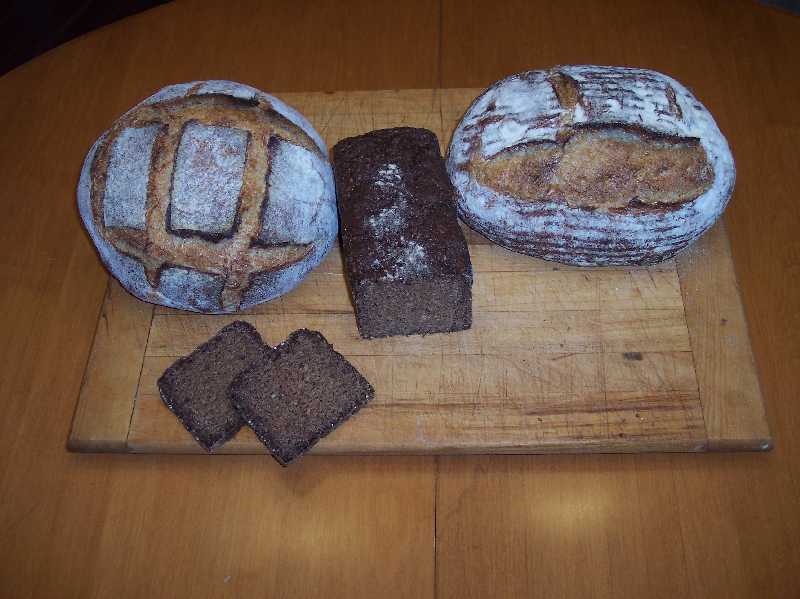
Horst Bandel's Black Pumpernickel from Hamelman's 'Bread' has been on my radar for as long as I've owned the book (about 9 months). The recipe is like no other pumpernickel that I've ever seen before, as all the ones I've come across previously have had caraway in them. I just assumed that it wasn't true pumpernickel if it didn't have caraway, so I've never bothered making it at home, having never acquired a taste for the stuff. When I read the formula for the HB pumpernickel I began to wonder if I'd ever really had a true pumpernickel since this formula and Hamelman's write-up preceding the recipe made it look very authentic to me. One of the other aspects of this bread that intrigued me was the long slow bake time of 12-16 hours. The process of slow cooking has always held a fascination for me through it's use of controlling heat and moisture, as well as smoke in the case of BBQ, to create something that is greater than the sum of it's parts. Anyone who's had the pleasure of eating a Texas style beef brisket or Southern style pulled pork shoulder will know exactly what I'm referring to. Never having baked a bread for much longer than an hour, the HB was something that I needed to try, just for the experience if nothing else. Last week I finally had all the things in place that I needed in order to make it, including the necessary free time. Two of the items had to be ordered such as the Pullman pan and the rye chops, and that took a few weeks, but in the interval I used the time to glean as much information from Andy, Nico, and others posted experiences with this bread as I could.
There are several components to this bread requiring a little preparation in advance, however I'm not going to go into all the detail here since Andy, Nico, Eric Hanner, Tx Farmer and Shiao-Ping have all covered this in their posts far better than I ever could.
http://www.thefreshloaf.com/node/17254/horst-bandel039s-balck-pumpernickel
What I will tell you is that this is without a doubt the stickiest, most cake-like bread dough that I've ever mixed by hand or machine. At one point early on in the hand mixing I wondered if the dough would ever come together enough that I could mold it, but with a little flour correction and some patient but gentle table work I finally managed to get it to a state I was confident it would mold properly after it's bulk fermentation of 30 minutes. Other than that everything went well thankfully, and I put it in the oven for it's overnight bake at 4:00PM, then gradually lowered the oven temp from 375F over the course of the next 5 hrs. Before going to bed I put the pan on a rack placed over an aluminium foil roasting pan and added 2L of boiling water to the roaster and lowered the heat to 170F (as low as the oven goes). Except for a 3AM check of the water level, the loaf went undisturbed until 8:00AM at which point I tested the loaf for excess moisture with a bamboo skewer. The skewer came out dry and the loaf was removed from the oven. By this time the house was filled with the rich aroma of rye and an almost a caramel like scent that even my wife Marie thought was quite wonderful. Remarkable, since she's not a fan of rye bread by any means.
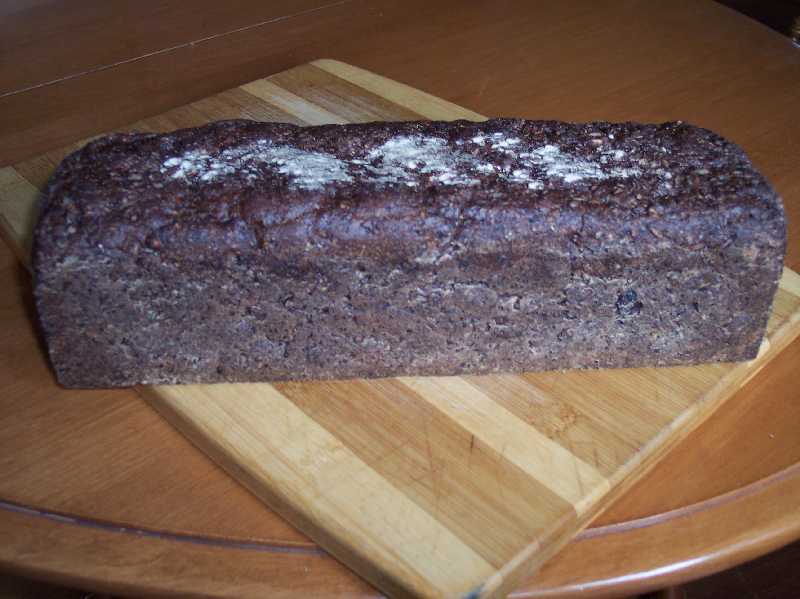
About 12 hours later I gave in and cut off a thin slice to have my first taste of this amazing bread. Trying to describe the flavour of this bread is like trying to describe a full bodied red wine. There's so much going on in it, from sour to sweet, to fruit nuances, overall balance, depth of flavour and finish, etc. It's simply the most flavourful and complex bread I've ever tasted. As for the bake, I think I could have gone with a little less time, as the crust is slightly thicker than I’d prefer, but the crumb is even textured and remains moist even after 5 days. For the most part I'm fairly happy with the result, but knowing that there is considerable room for improvement. I'm happier still with the fact that now I have a better idea of what real pumpernickel should taste like.
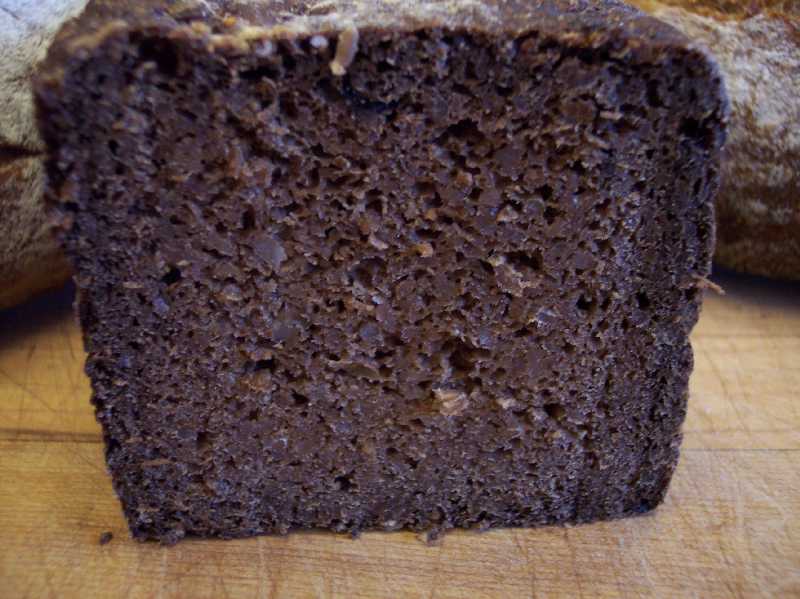
As much as I love the HB Pumpernickel, it's impossible to make a decent size sandwich with it so I used that as an excuse to make the Country Rye Bread from Tartine Bread a few days later. It's really just a Pane de Campagne but with an 81.8% hydration including leaven. Robertson indicates that you can vary the proportion of rye to suit your taste, and as the formula calls for only 17% , I increased it to 20% but keeping the water at the original weight. Other than that the procedure is the same as for his Basic Country Bread that I posted on last week.
http://www.thefreshloaf.com/node/20515/tartine-country-bread-same-dough-two-different-baking-methods
The dough had a cool 70F bulk ferment for 3hrs then placed in the fridge overnight till the next afternoon, (about 19hours). It sat at room temp for an hour, then divided, rounded lightly, and rested for 45 minutes. I shaped one for an oblong brotform and the other as a boule to go in a banneton. The dough was very slack and tacky so I dusted the brotform quite heavily, not wanting any sticking problems on unmolding, which left the finished loaf with a little more flour on it than I would have liked . The oval loaf was baked under a dutch oven, but on the stone as the lid of the dutch oven is concave and wouldn't have worked with this shape of loaf. The boule was baked entirely in the dutch oven. Both loaves turned out quite similar to the Basic Country (BC) loaves, with a nice dark colour and sheen to them. The loaf is quite a bit denser than the BC because of the rye, but with a slightly open crumb, if a little irregular in spots. The dough really needed a warmer bulk ferment during the initial stage, which I'll try to be more careful with next time around. I found this to be a pretty easy dough to make despite it's high hydration simply because you do all the workup on it in the bowl until it's time to divide and shape. Then it's just a matter of using a little flour to keep it from sticking to the counter and your hands. The flavour is very good , even better than previous versions of Pane de Campagne I've made that I thought were quite tasty, and this has a beautiful chewy crust that I prefer to the others.
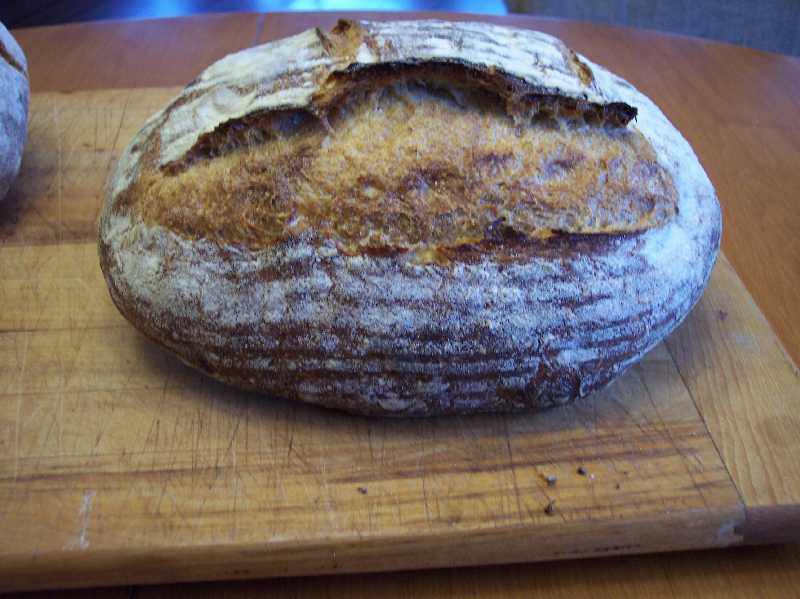
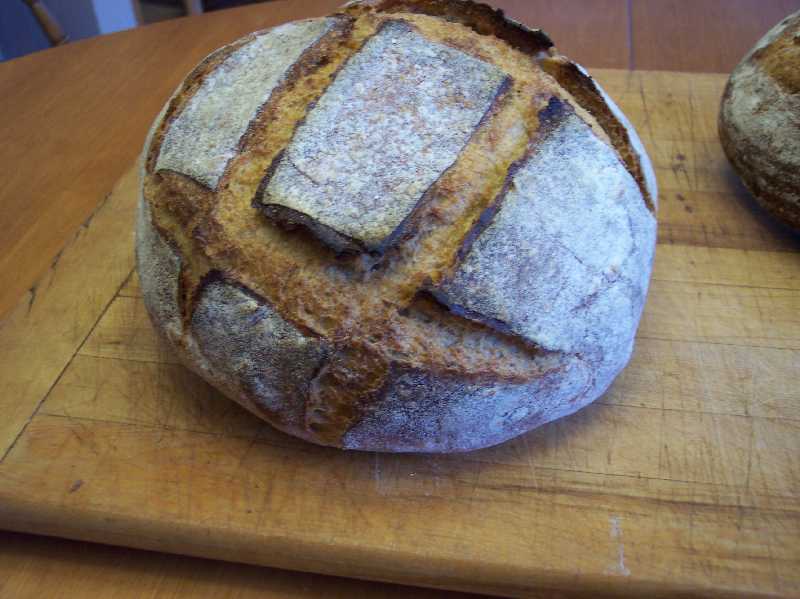
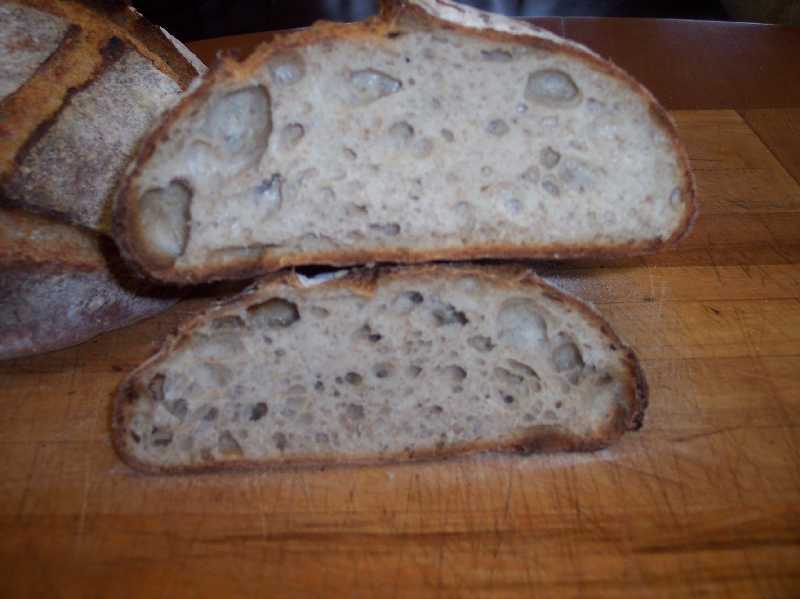
Here on Vancouver Island we're well into storm season, with a cold wet winter fast approaching. Either of these breads will be fine accompaniments with some of my favourite slow simmered stews and braises to help see me through the worst of it.
Best Wishes,
Franko









